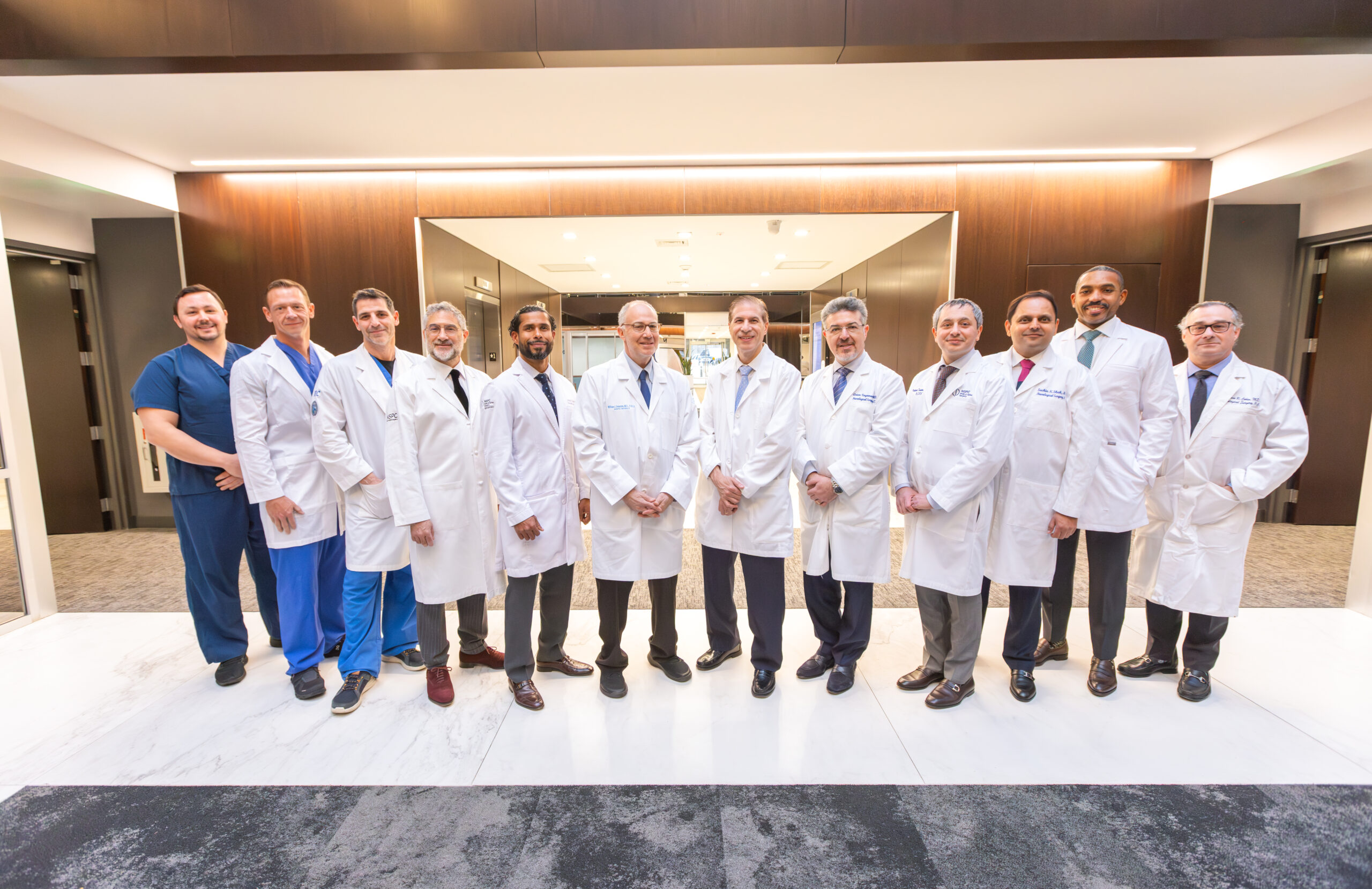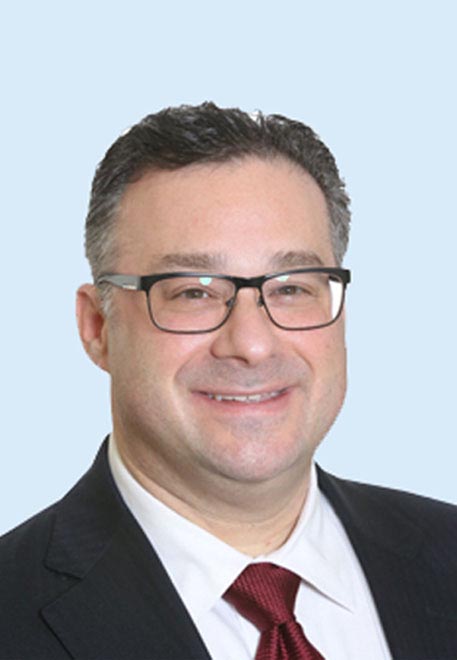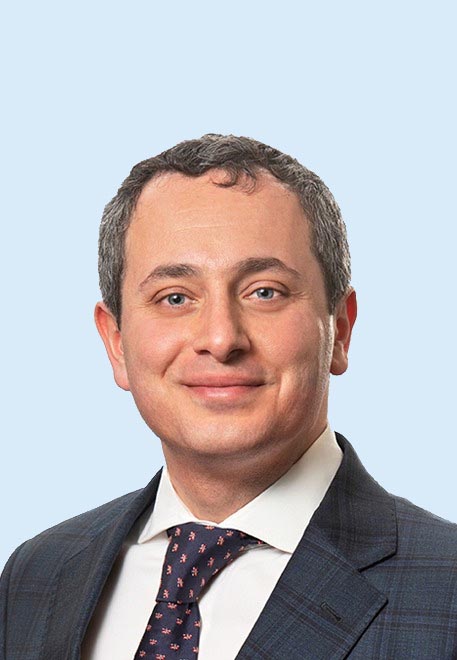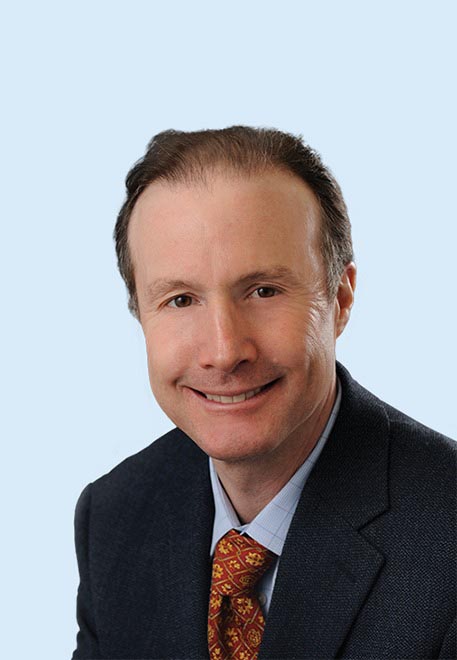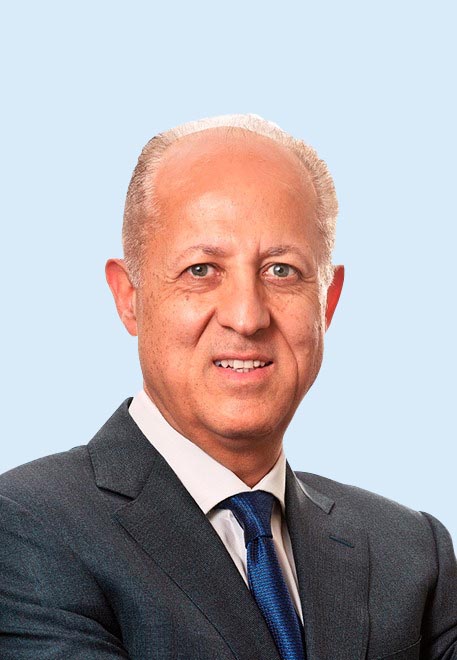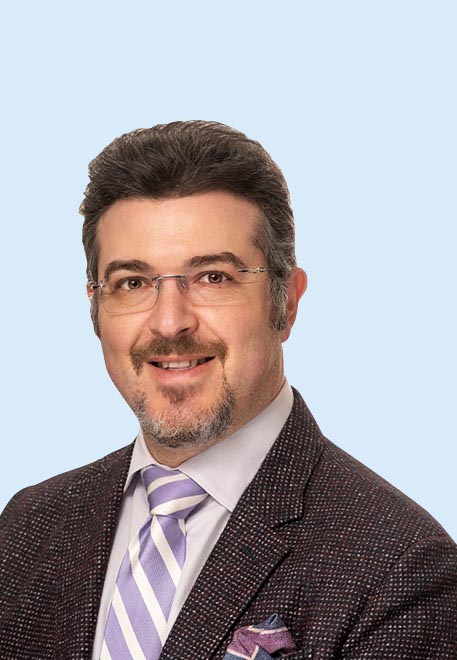- PATIENT FORMS | REQUEST A CONSULTATION | CONTACT US
- 1-844-NSPC-DOC
Spinal Deformity
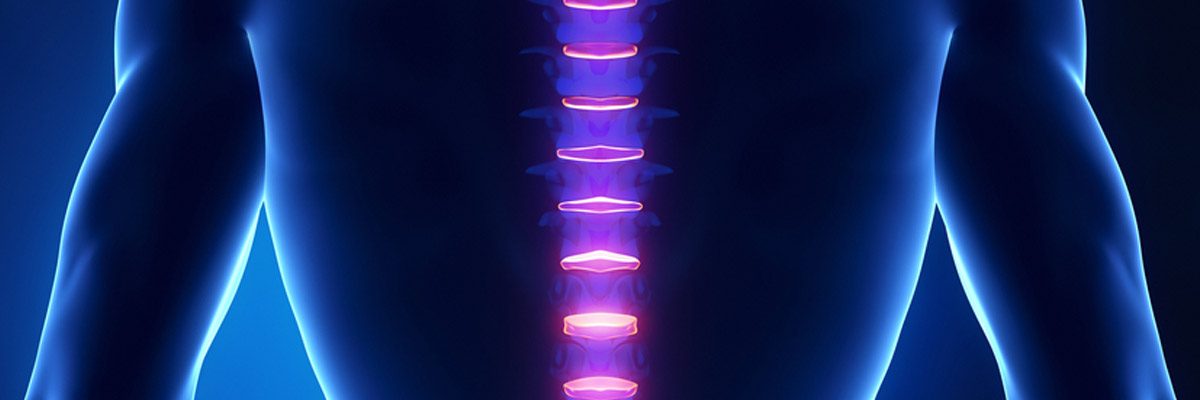
What Is a Spinal Deformity?
Take ActionSpinal deformity refers to an abnormal alignment or curvature of the spine. The human spine, also known as the vertebral column, is naturally curved to provide balance, support, and flexibility. It consists of a series of bones called vertebrae, which are stacked on top of each other. These natural curves include the cervical curve in the neck, the thoracic curve in the upper back, and the lumbar curve in the lower back.
When these curves become exaggerated or misaligned, it results in spinal deformity. Common types of spinal deformities include:
- Scoliosis is characterized by a sideways curvature of the spine, often forming an “S” or “C” shape. This condition can develop at any age but is most commonly diagnosed in children and adolescents.
- Kyphosis involves an excessive outward curve of the spine, leading to a hunched or rounded back. This condition can occur at any age but is often seen in older adults due to degenerative diseases like osteoporosis.
- Lordosis, also known as swayback, is the opposite of kyphosis. It is characterized by an excessive inward curve of the lower spine, which can result in an exaggerated posture in which the buttocks and abdomen protrude more than usual.
These deformities can be structural, where the shape of the spine itself is altered, or non-structural, where the curve is temporary and correctable. Structural deformities are often more severe and may require medical intervention.

Causes of Spinal Deformity
Spinal deformities can have various causes, ranging from congenital issues present at birth to conditions that develop later in life. Understanding these causes is crucial for prevention, early detection, and appropriate treatment.
Congenital Causes
Congenital spinal deformities are present at birth and result from malformations in the developing fetus. These malformations can lead to conditions such as congenital scoliosis, where the spine curves abnormally due to misshapen vertebrae. Congenital kyphosis and lordosis can also occur due to similar developmental issues.
Genetic Factors
Genetics plays a significant role in the development of spinal deformities. Conditions like idiopathic scoliosis, which has no known cause, are believed to have a genetic component. If a family member has a spinal deformity, the likelihood of developing a similar condition increases.
Neuromuscular Conditions
Neuromuscular conditions such as cerebral palsy, muscular dystrophy, and spinal muscular atrophy can lead to spinal deformities. These conditions affect the muscles and nerves that support the spine, leading to imbalances and abnormal curvatures.
Degenerative Diseases
Degenerative diseases are a common cause of spinal deformity in adults. Osteoporosis, for instance, weakens the bones, making them more susceptible to fractures and deformities such as kyphosis. Degenerative disc disease, which involves the deterioration of the intervertebral discs, can also lead to abnormal spinal curvatures.
Other causes include:
- Trauma and Injury
- Infections and Tumors
- Poor Posture and Lifestyle Factors
- Other Medical Conditions such as Marfan syndrome and Ehlers-Danlos syndrome
Understanding the various causes of spinal deformity is essential for early intervention and effective treatment. While some causes, such as congenital deformities and genetic factors, cannot be prevented, others can be managed through lifestyle changes, early medical intervention, and appropriate care.
Symptoms of Spinal Deformity
The symptoms of spinal deformity can vary widely depending on the type, severity, and underlying cause of the condition. Recognizing these symptoms early can lead to timely diagnosis and effective management. Here, we explore the common symptoms associated with different types of spinal deformities.
Visible Abnormalities
One of the most noticeable symptoms of spinal deformity is the visible abnormal curvature of the spine. This can manifest as a prominent hump, uneven shoulders or hips, or an exaggerated curve in the back. In scoliosis, for instance, the spine may appear to curve sideways, resulting in uneven shoulder heights or a prominent rib cage on one side. In kyphosis, the back may appear hunched or rounded, while in lordosis, the lower back may exhibit an excessive inward curve.
Pain and Discomfort
Pain is a common symptom of spinal deformity. This can range from mild discomfort to severe, debilitating pain. The pain may be localized to the affected area or radiate to other parts of the body. For example, scoliosis can cause back pain, while kyphosis and lordosis can lead to pain in the back, neck, and legs. The pain is often due to the abnormal pressure placed on the vertebrae, muscles, and nerves.
Limited Mobility and Stiffness
Spinal deformities can significantly affect mobility and flexibility. Individuals may experience stiffness in the back, making it difficult to bend, twist, or perform everyday activities. This limited range of motion can impact one’s ability to participate in physical activities and lead to a sedentary lifestyle, further exacerbating the condition.
Neurological Symptoms
Severe spinal deformities can compress the spinal cord or nerves, leading to neurological symptoms. These can include numbness, tingling, or weakness in the arms, legs, or other parts of the body. In some cases, individuals may experience difficulty walking, coordination problems, or loss of balance. These symptoms indicate a more serious underlying issue that requires immediate medical attention.
Respiratory and Cardiovascular Issues
In severe spinal deformities, such as advanced kyphosis, the abnormal curvature can affect the chest cavity and restrict lung capacity. This can lead to respiratory problems, such as shortness of breath, difficulty breathing, or frequent respiratory infections. Additionally, the pressure on the heart and lungs can result in cardiovascular issues, such as reduced heart function or chest pain.
Fatigue
Chronic pain and discomfort from spinal deformity can lead to fatigue. The body expended more energy to maintain posture and perform everyday activities, resulting in tiredness and decreased stamina. This fatigue can affect the overall quality of life, making it challenging to engage in work, social activities, and hobbies.
Psychological and Emotional Impact
Living with a visible spinal deformity can have significant psychological and emotional effects. Individuals, especially adolescents, may experience low self-esteem, body image issues, and social anxiety. The chronic pain and physical limitations associated with spinal deformities can also lead to depression and anxiety.
Growth and Developmental Issues
Spinal deformities can affect growth and development in children and adolescents. Severe cases of scoliosis, for example, can lead to asymmetrical growth of the torso and limbs, resulting in differences in leg lengths or uneven waistlines. Early detection and intervention are crucial to prevent long-term developmental issues.
How We Treat Spinal Deformity
Treating spinal deformity involves a multifaceted approach tailored to the type, severity, and underlying cause of the condition. The goal of treatment is to correct or manage the curvature, alleviate symptoms, and improve function and quality of life. Here, we explore the various treatment options available for spinal deformity.
Non-Surgical Treatments
Non-surgical treatments are often the first line of defense against spinal deformities, especially in mild to moderate cases. These treatments aim to manage symptoms and prevent further progression of the condition.
Physical Therapy
Physical therapy plays a crucial role in managing spinal deformities. A physical therapist can design a customized exercise program to strengthen the muscles supporting the spine, improve flexibility, and correct posture. Exercises may include stretching, core strengthening, and activities to enhance overall balance and coordination.
Bracing
Bracing is commonly used, particularly in children and adolescents with scoliosis. The purpose of a brace is to halt the progression of the curvature as the child grows. Braces are typically worn for several hours a day and can be removed for activities like sports. The effectiveness of bracing depends on the severity of the curve and the patient’s adherence to the prescribed regimen.
Medication
Medications can be prescribed to manage pain and inflammation associated with spinal deformities. Nonsteroidal anti-inflammatory drugs (NSAIDs), muscle relaxants, and pain relievers can help alleviate discomfort and improve mobility. In some cases, corticosteroid injections may be recommended to reduce inflammation and relieve nerve compression.

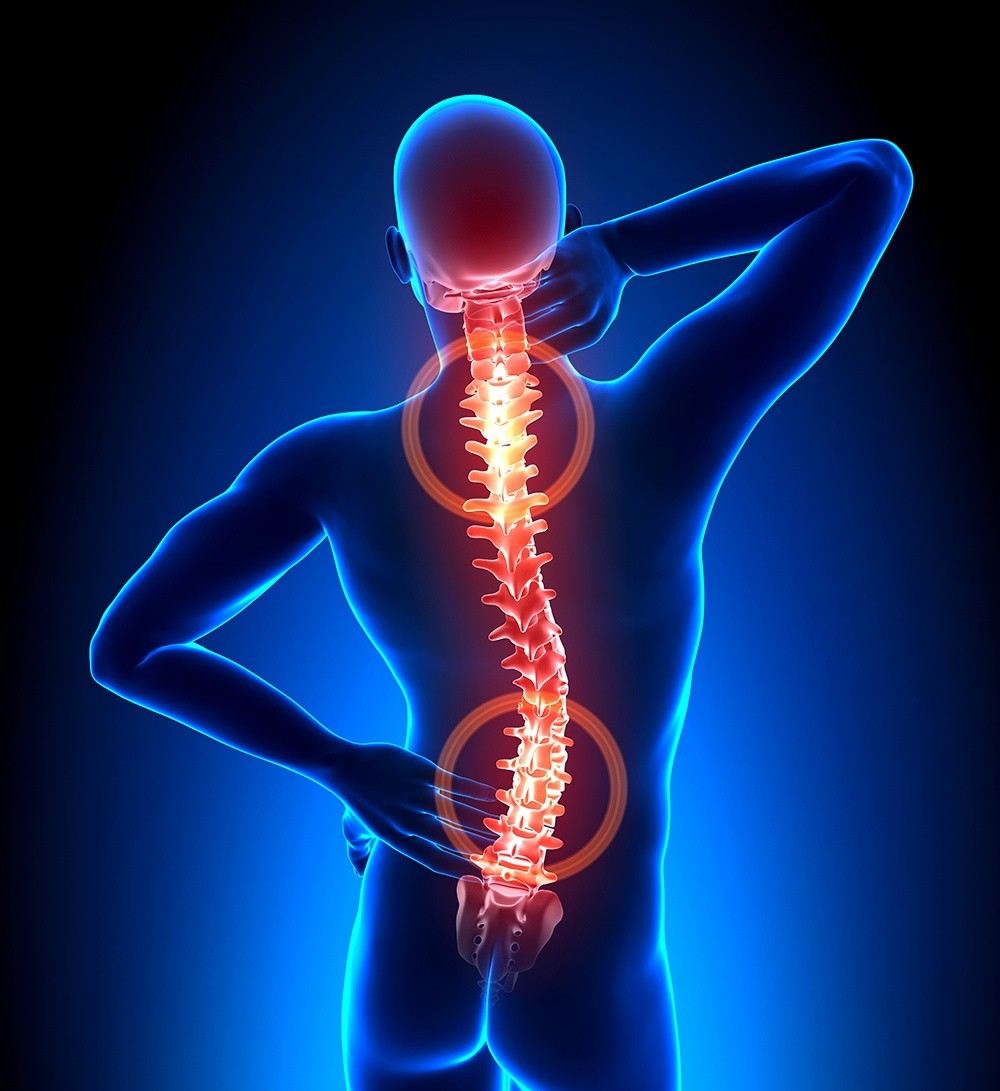
Surgical Treatments
Surgery is considered when non-surgical treatments fail to provide relief or if the spinal deformity is severe and progressive. The decision to undergo surgery depends on various factors, including the degree of curvature, the presence of neurological symptoms, and the impact on the individual’s quality of life.
Spinal Fusion
Spinal fusion is a common surgical procedure for treating severe scoliosis and other spinal deformities. It involves joining two or more vertebrae together using bone grafts, metal rods, and screws to stabilize and straighten the spine. Over time, the fused bones heal into a single solid bone, preventing further curvature.
Osteotomy
An osteotomy involves cutting and realigning the bones to correct the spinal deformity. This procedure is often used for severe cases of kyphosis or when spinal fusion alone is insufficient. The surgeon can realign the spine and improve posture by removing a wedge-shaped piece of bone.
Vertebroplasty and Kyphoplasty
Vertebroplasty and kyphoplasty are minimally invasive procedures used to treat fractures caused by osteoporosis, which can lead to kyphosis. These procedures involve injecting bone cement into the fractured vertebrae to stabilize and strengthen them. Kyphoplasty also includes the insertion of a balloon to create space before injecting the cement, helping to restore the vertebra’s height.
Spinal Decompression
Spinal decompression surgery relieves pressure on the spinal cord or nerves caused by spinal stenosis, herniated discs, or tumors. This procedure involves removing structures that are compressing the nerves, such as bone spurs or parts of the vertebrae, to alleviate pain and improve function.
Early intervention and a personalized treatment plan are essential for managing spinal deformities effectively. Whether through non-surgical methods or surgical intervention, the aim is to correct the deformity, alleviate symptoms, and enhance the individual’s overall well-being.

Call Today
If you or a loved one is experiencing symptoms of spinal deformity or seeking treatment options, our team of dedicated specialists is here to help. We provide comprehensive care and personalized treatment plans to address your specific needs.
We look forward to helping you achieve a healthier, pain-free life. Spinal deformity is a complex condition that requires a comprehensive understanding of its causes, symptoms, and treatment options. Individuals with spinal deformities can lead healthy, active lives with the right approach and expert care. Contact us today to learn more about how we can help you on your journey to spinal health.
Physicians
Connect With Our 7 Convenient Locations
across Long Island, NY
Our expert physicians, surgeons and doctors are ready to serve you at our 7 convenient locations across Long Island, NY. Connect today to learn how our award winning, world class experts can help.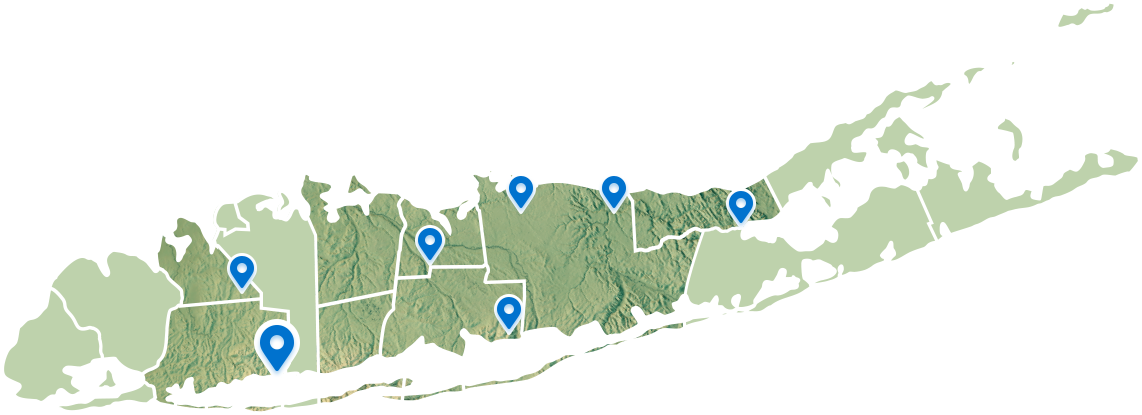
4250 Hempstead Turnpike Suite 4,
Bethpage, NY 11714
(516) 605-2720
COMMACK
353 Veterans Memorial Hwy,
Commack, NY 11725
(631) 864-3900
One Hollow Lane, Suite 212
Lake Success, NY 11042
(516) 442-2250
MANHATTAN
215 E. 77th Street Ground Floor
New York, NY 10075
(646) 809-4719
EAST SETAUKET
226 North Belle Mead Road, Suite C
East Setauket, NY 11733
(631) 828-3001
100 Merrick Road, Suite 128W
Rockville Centre, NY 11570
(516) 255-9031
WEST ISLIP
500 Montauk Hwy
West Islip, NY 11795
(631) 983-8400
World
Class
Expertise
For over 50 years & 350,000 patients NSPC has been a trusted global medical leader.
Contact us today for an appointment or consultation.

